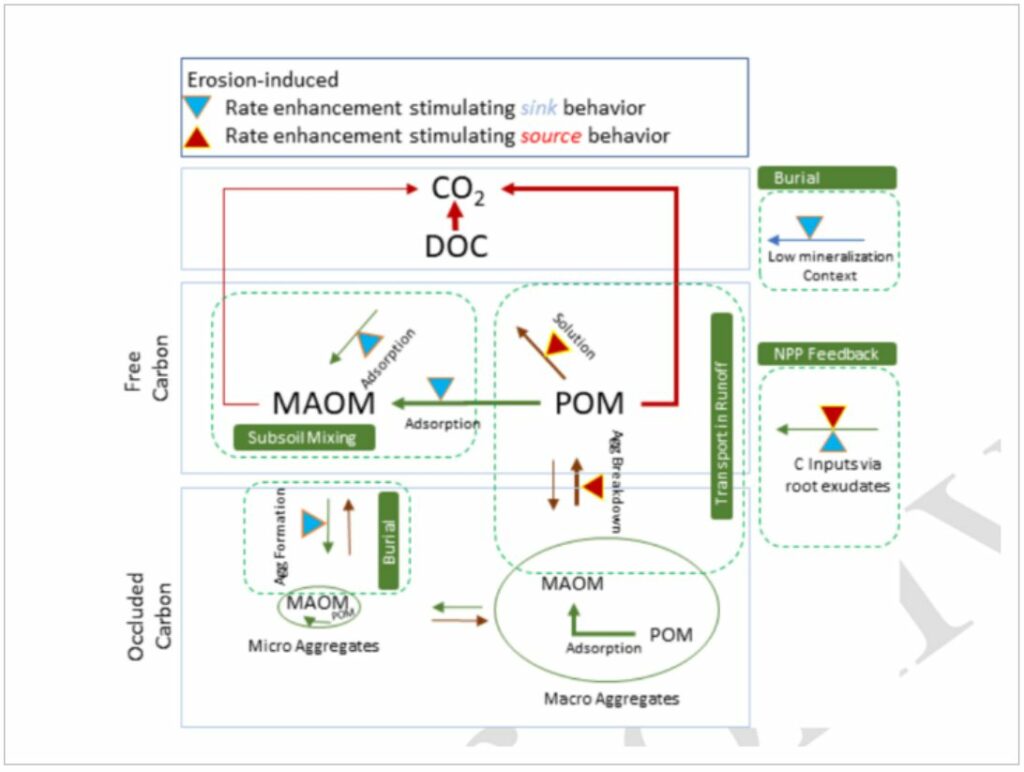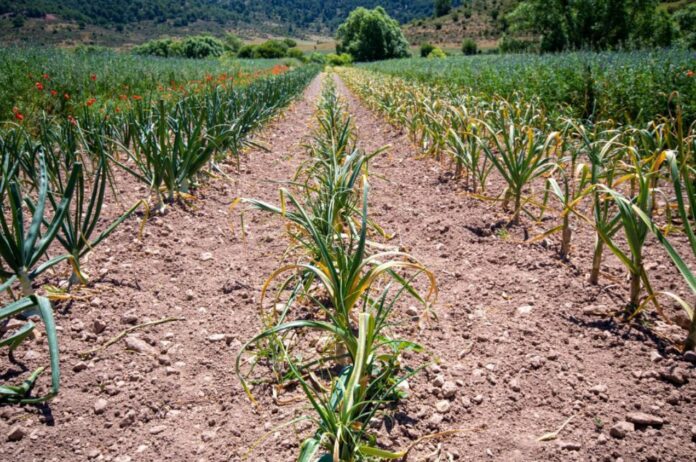For the last decade, experts have warned that soil erosion poses the greatest danger to worldwide food supplies.
A fresh discussion over whether agricultural soil erosion produces a net supply or sink of organic carbon (OC) emerged when governments throughout the globe attempted to adopt soil conservation techniques.
The issue is important because carbon sources emit more carbon than they absorb, and carbon sinks absorb more carbon than they release. In any case, the solution has effects on how soil conservation techniques are used globally and how they relate to climate change.
In a new study that came out today in the journal Biogeosciences of the European Geosciences Union, the authors demonstrate that the apparent soil organic carbon erosion paradox can be solved by taking into account the geographical and historical context. The research was a joint effort between the universities of UCLouvain in Belgium and ETH in Switzerland.
Initially, studies implied that a considerable portion of organic carbon in the soil that gets disturbed due to agricultural activities ends up in the atmosphere. Consequently, it was concluded that agricultural erosion contributes to atmospheric CO2, thereby suggesting a mutually beneficial situation. Implementing soil conservation techniques to reduce erosion not only leads to more robust soils but also creates a significant carbon sink.
This notion, however, has been called into question by more recent research, which points to an alternative route for the eroded organic carbon. They come up with the idea of a “geomorphic OC pump” that moves organic carbon from the air to upland soils that are recovering from erosion and to burial sites where organic carbon is safe from decomposition since there aren’t as many minerals there.
Organic carbon fixed by plants is continually transported down this geomorphic conveyor belt, eventually ending up in sedimentary settings.
According to these studies, erosion may actually serve as an organic carbon sink since it has the potential to trap significant amounts of atmospheric carbon via the combination of organic carbon recovery and land-based sedimentation.
According to Kristof Van Oost of the Earth & Life Institute, UCLouvain, “these two competing views can exist at the same time,” and this “study offers an understanding of differences in perspective.”

According to Johan Six, affiliated with the Department of Environmental Systems Science at the Swiss Federal Institute of Technology and ETH Zurich, the recently discovered results provide the initial insight into the interaction and counterbalancing of various carbon dynamic processes triggered by erosion. This interaction plays a crucial role in determining the net carbon flux from terrestrial environments to the atmosphere.
Van Oost and Six collaborated on an extensive review of literature, examining 74 studies. Six explains the rationale behind the contradictory findings of previous research, stating “that the perceived paradox was mostly related to not having considered the full cascade of carbon fluxes associated with erosion.”
This made them think to explain how complicated the whole carbon cascade is.
They concluded that the link between water erosion and organic carbon loss vs stabilizing activities is determined by processes that work across temporal and geographical dimensions, which is at the very heart of the dilemma. Using decay functions, they modeled the consequences of the many water erosional (sub)processes through time and place.
When looking at short time and space scales, both scientists revealed that soil erosion induced a source for atmospheric CO2, but when looking at longer time and space scales, both sinks and sources were seen.
Erosion events convert some of the soil’s organic carbon from a stored to a mobile state in seconds to days, speeding up its mineralization to gaseous forms. In contrast, studies that look at erosion as a way to get rid of carbon dioxide from the air usually look at the geomorphic OC conveyor belt over longer periods of time.
The study authors highlight the importance of erosion management due to the many ecological advantages it provides but suggest using cross-scale methods to reflect erosion’s impacts on the global carbon cycle.
Considering the future, these findings “are mainly derived from studies conducted in temperate regions,” says Van Oost in his conclusion.
“We now need new research on erosion effects in marginal lands but also tropical regions.”
Source: 10.5194/bg-20-635-2023
Image Credit: Getty
